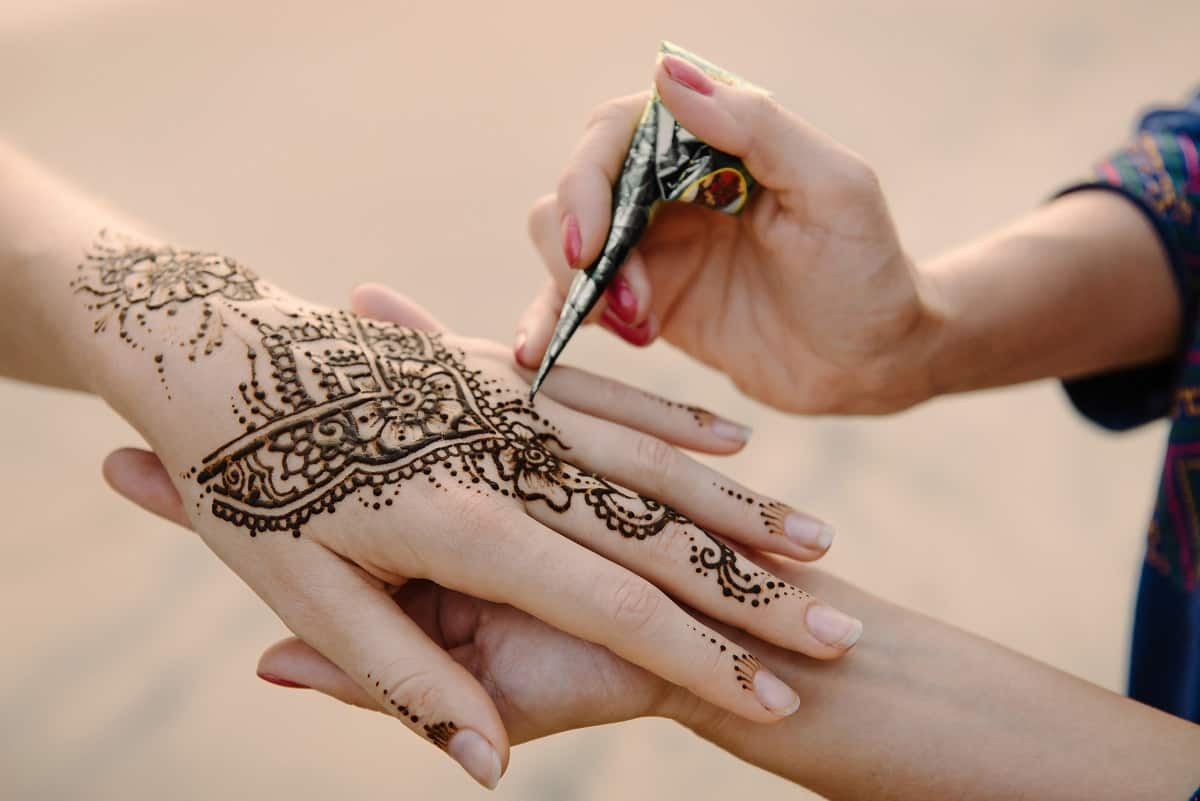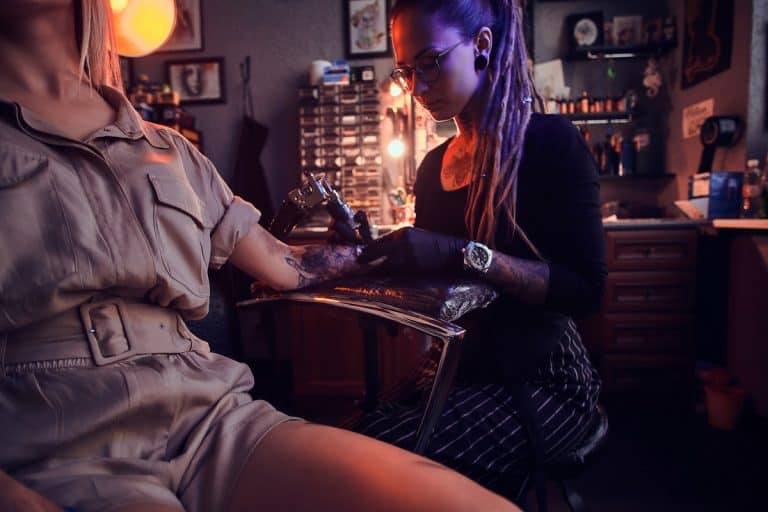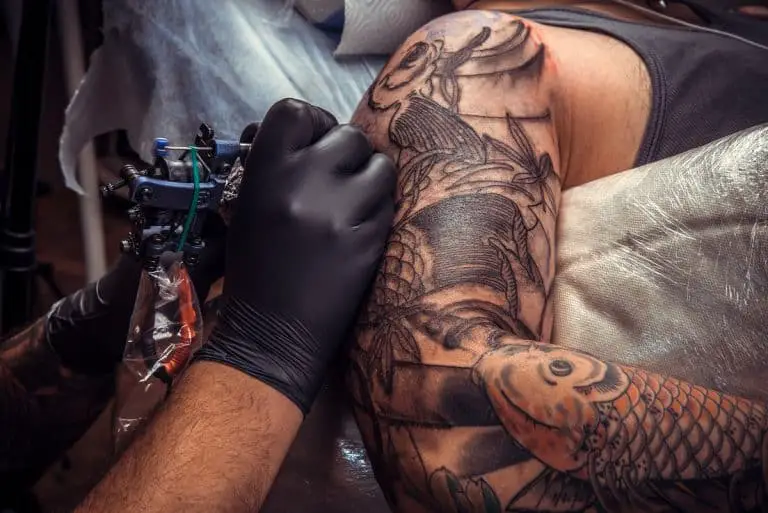Best Henna Tattoos 2024: Everything You Need To Know + Best Design Ideas
In the past few years, we’ve seen a rise in the so-called temporary tattoos. People around the world are using temporary tattoos as a way to experience body art without the life-long commitment of a real tattoo.
However, one specific type of temporary tattoos has taken the body art and beauty world by storm; henna tattoos. These tattoos are made from a special type of dye that has been used for thousands of years among ancient men and women as a form of ‘make-up and beauty product’.
Nowadays, henna has resurfaced among modern men and women as an excellent pigment source used for hair dyeing, fabric staining, and temporary body art.
In the following paragraphs, we’ll take a look at henna, henna tattoos, and which brands of henna should you buy from. So, without further ado, let’s get started!
Henna – Dye and Body Art Explained
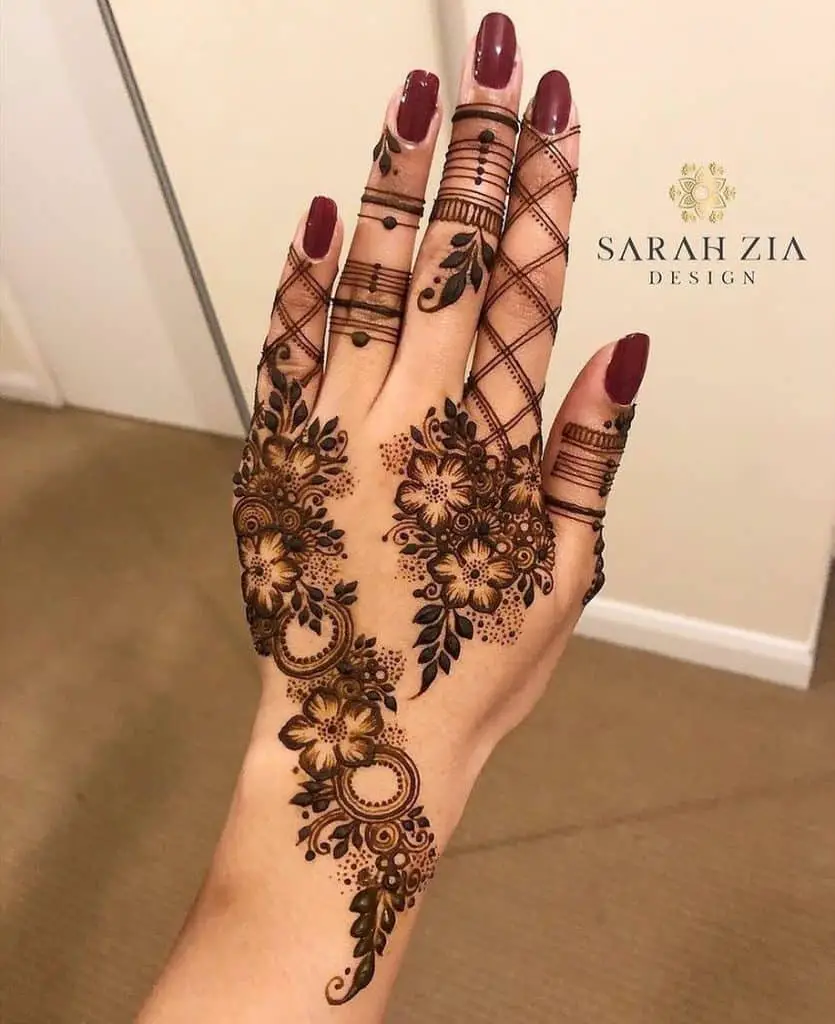
What Is Henna?
As we mentioned, henna is a type of dye used for different purposes and occasions. Henna is made from a type of plant known as the henna tree, the Egyptian privet, or mignonette tree. The plant, or its flowers to be exact, is dried, turned into a fine powder, and later made into a powder or a paste-like product, ideal for coloring purposes.
It has been discovered thousands of years ago, and ever since, henna has been a major, if not main, source of pigment for hair colors and makeup or body art colors.
Henna is known to not only dye the hair and fabrics, but also the skin. The dyeng effect is temporary, which makes henna ideal for temporary tattoos.
Some people even use henna to treat skin sensitivity, irritation, and skin conditions.
What is The Origin of Henna?
The term ‘henna’ is of Arabic origin, but its use origin is tied to ancient Egypt. It is believed that Egyptian women were dyeing their hair a bright red at the sides as a part of the then-trendy aesthetics.
Henna has also been used in Europe in the 1800s, by artists during the Pre-Raphaelite era. This is interesting because it was believed in Britain that red hair is unattractive. But, with henna, women started dyeng their hair red, and men started fetishizing red hair.
Nowadays, however, henna is predominantly present in India, the Middle East, and in some parts of Europe, the US, and Australia.
It is mostly tied to the Indian culture, Indian weddings, as well as Indian beauty standards and practices for young and older women. Some consider henna dyeng and henna body art as a form of ritual for many Indian women, especially when it comes to bridal parties.
For example, the soon-to-be bride undergoes a process of getting her hands ‘tattooed’ with henna. The belief is that the darker the henna turns out, the better and stronger her marriage will be.

What Are The Origins of Henna Tattoos?
Henna tattoos aren’t tattoos; the skin is not tattooed using henna instead of ink, as some people believe. Henna is used to temporarily dye the skin by using beautiful designs and patterns.
As such, henna tattoos are known to be used in cultures around the world. The origin of women adorning and dyeing their body parts goes back to the Bronze Age in the easter Meditteranean.
The earliest mention of henna in the context of marriage and fertility comes from the Ugaritic legends (today’s Syria), where women would adorn their bodies with henna so they could welcome their husbands from the war and celebrate their victory.
How Long Do Henna Tattoos Last?
Some people think that henna tattoos are permanent. As we’ve mentioned, henna tattoos are temporary and short-term. So, in terms of how long a henna tattoo lasts, we can say anywhere between 7 and 14 days.
The longevity of a henna tattoo depends largely on the quality of the henna paste as well as the very application. For example, when henna is applied, the longer it sits on the skin, the better it will absorb and the longer it will last.
So, if you want your henna to last only a couple of days, simply don’t let it sit more than 20 to 30 minutes, up to an hour. For longer lasting results, you can let the henna sit for 3 to 4 hours.
Because henna tattoos are generally placed on feet and hands, they tend to fade faster due to exposure to water, soap, and other external factors.
Are Henna Tattoos Safe?
Henna tattoos are as safe as the henna itself is safe. Generally speaking, real henna (which is made only from the plant and the leaves) is of a reddish/orange color, that can have a red or brown tint. This type of henna, and tattoos made from it, are considered safe for the skin. In some cases, real, natural henna can be useful for different skin conditions.
However, many people tend to sell black henna, so appeal to the ‘temporary tattoo’ market where the majority of tattoos mimic ink and are black. Well, this is the type of henna that can get you in trouble.
Black henna is a paste made from a chemical known as paraphenylenediamine (PPD). This chemical is allowed for use in regular hair dyes but in a controlled amount. In black henna, these amounts are not controlled, and the amount of PPD in black henna surely is more than allowed.
Many people who were using black henna for hair dyeing and body art have experienced chemical burns and serious allergic reactions. The signs your skin is reacting to PPD in henna are following;
- The skin starts burning and tingling
- The skin starts feeling uncomfortable
- There is often severe redness and blistering of the skin
- Many people have reported swelling of the area where henna is placed
- Some people were left with scarred skin
So, what can you do to avoid serious damage from henna?
First, buy from reputable, reliable sources. Only choose natural henna, with no additives and weird chemical composition.
Then, if you do experience a reaction to PPD, call your doctor immediately and explain your case.
Note: We recommend you always to a skin test with new products, especially products like henna, which are not controlled. In terms of ingredients and production. Apply a small dot of henna on your skin and wait for up to half an hour. If the henna is reddish/brownish and the skin doesn’t react, then continue with your regular henna application.
How Can You Remove a Henna Tattoo?
First of all, henna tattoos will fade away on their own in between one and two weeks. However, if you want to remove a henna tattoo, here’s how you can do it;
- Exfoliate using brown sugar and coconut oil mixture
- Exfoliate using sea salt and olive oil mixture
- Use temporary-tattoo removing wipes
Do not exfoliate with the aforementioned items if your henna tattoo is on the face or the neck. This will damage and irritate the skin. It is best to leave the henna to fade on its own than risk skin damage and irritation.
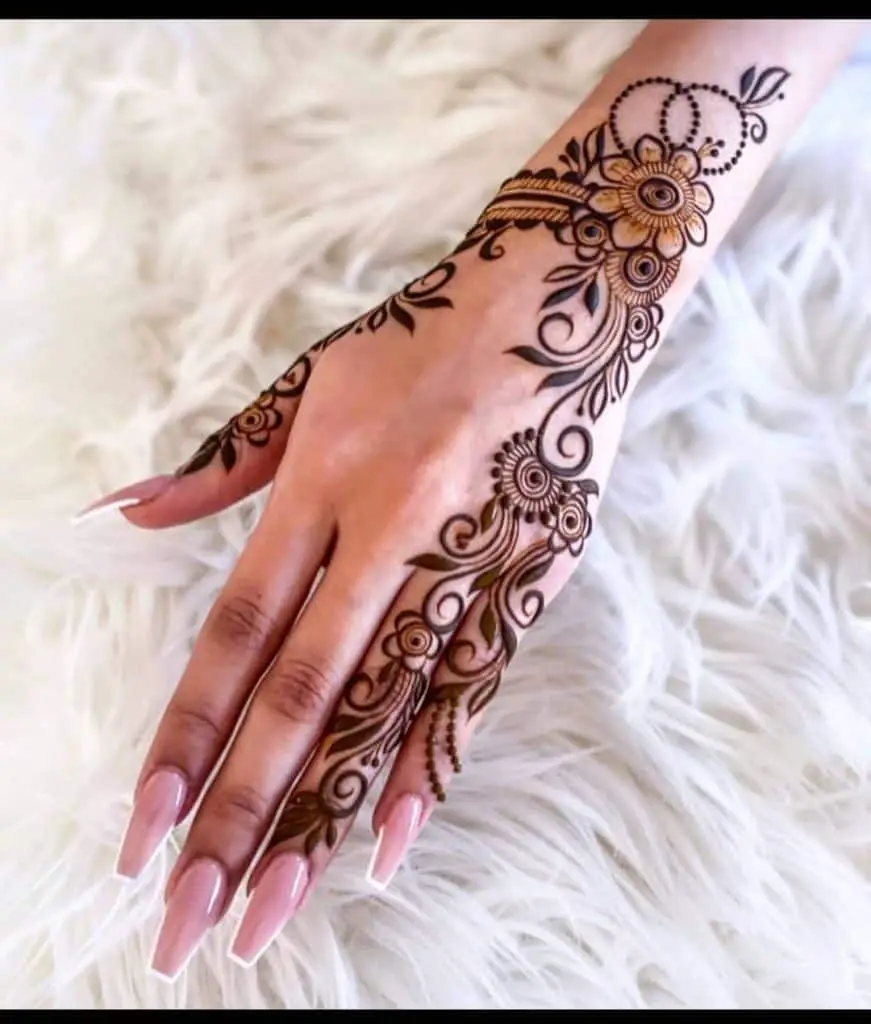
Are Henna Tattoos Expensive?
One of the reasons henna is so popular lies in the cost. The product itself (the henna paste) is incredibly affordable. So, if you want to do a henna tattoo yourself, you might spend up to $10.
However, if you do want your henna tattoo done by a professional henna artist, then you can expect to pay anywhere between $100 and $1000, depending on the size of the tattoo, as well as the design and the artist themselves.
We believe that it is always better to go get a henna tattoo done by a professional, skilled artist, especially if it’s for a special purpose or occasion. Bridal henna tattoos also tend to be more expensive than regular ones.
The Best Henna Powders For Tattoos
Let’s premise this section by saying that we DO NOT recommend anyone buying pre-mixed henna powders and pastes. These products most generally contain dangerous chemical additives and do not provide insight into the ingredients.
These products are also promoted because the henna is black. As we’ve mentioned before, black henna is dangerous since it contains chemicals like PPD. If you use this, you can get serious skin damage!
Also, we do not recommend people do their henna tattoos, but in case you want to try out some DIY henna designs, feel free to use the following henna powders. These will help you create your henna paste, which is safe for the skin;
1. Just Jaivik Organic USDA Henna Powder
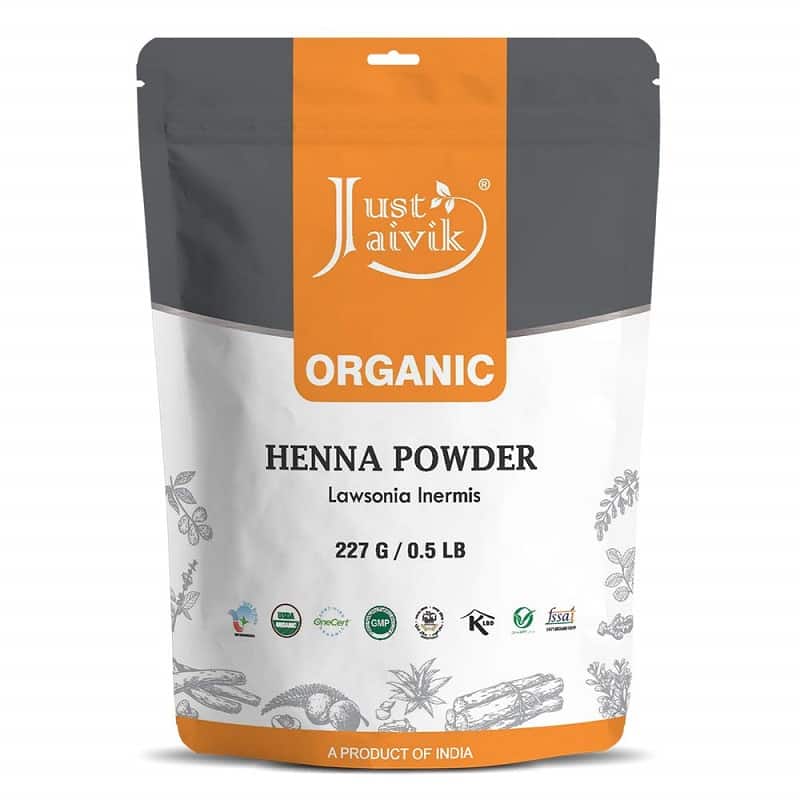
This henna powder is one of the best-selling ones on Amazon. It is labeled as intended for hair dyeing. However, this powder can be used for home henna tattoos. So, if you want to try out doing your henna tattoo, you cannot go wrong with the Just Jaivik henna powder.
Product Info
- This henna powder is organic and has no chemical additives
- It will give a natural color and shine to the hair, and provide a pigmented henna tattoo
- The powder is free from chemicals, bleaches, PPD, and parabens
- It is considered safe for all ages
The powder is easy to mix; all you need is some water, a henna tattoo applicator (which you DIY as well), and you’re good to go.
2. The Henna Guys Pure Henna Powder
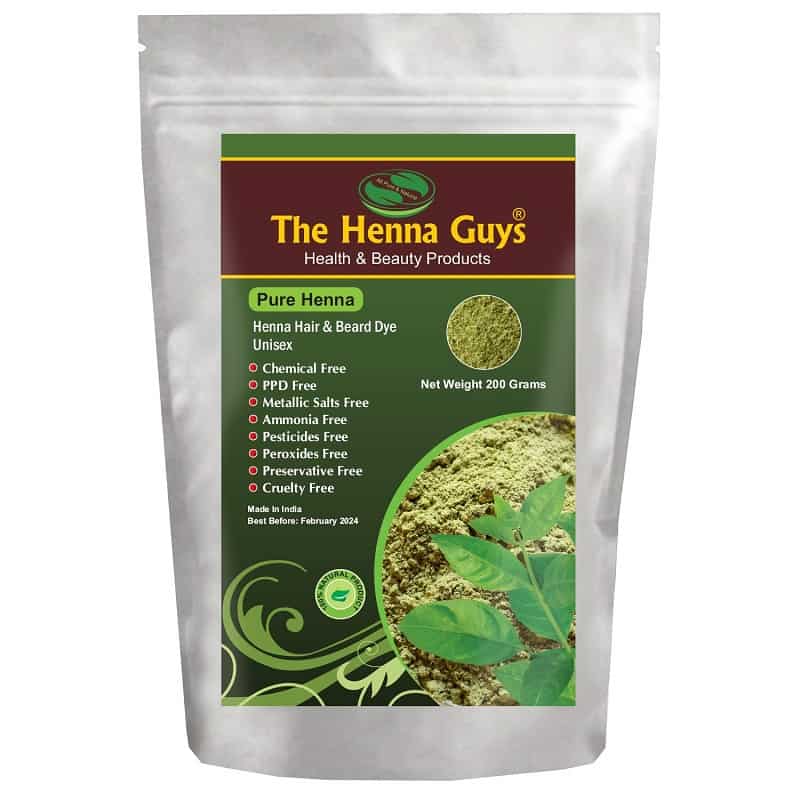
Another excellent henna powder comes from The Henna Guys store. This henna powder is 100% organic, and it is intended for hair dyeing purposes. But, we do recommend you use it for a DIY henna tattoo since it creates an excellent henna paste you can easily handle and create tattoos with.
Product Info
- This henna powder is 100% natural, raw, and vegan
- It will give and natural pigmentation
- It doesn’t contain chemicals and metallic salts
- The powder is free from coloring and conditioning additives
- It is extremely smooth due to cloth-sifting methods
- The powder creates a smooth paste, easy to apply
Just like with the previous henna powder, this powder also requires some water and a henna tattoo applicator if you want to create some DIY tattoo designs.
3. H&C 100% Natural Henna Powder
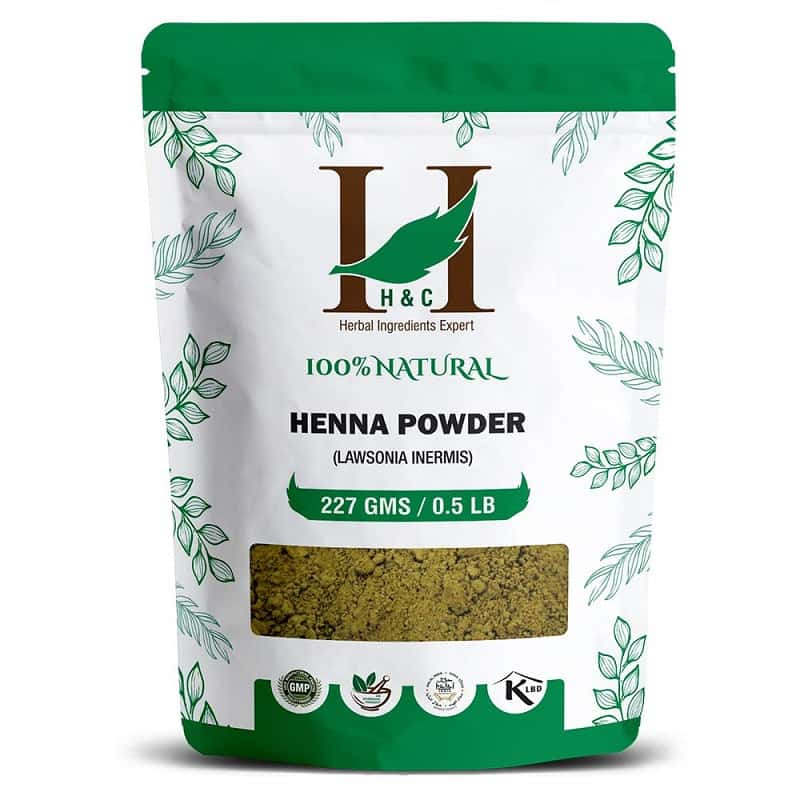
The H&C henna powder is also intended mainly for hair dyeing. However, as mentioned before, we believe henna powders are excellent for henna tattoos. So, go for this powder if you’re looking for a safe, organic, and natural henna. This powder creates the smoothest henna paste, and it completely safe to use on any type of skin.
Product Info
- This henna powder is 100% natural, organic, and made from organically grown henna plants as well
- The powder doesn’t contain chemical additives and PPD
- It is triple sifted for that extra smoothness of the paste
- The powder provides extremely pigmented, reddish henna paste
- It is safe for use on hair and skin, for adults and children as well
This powder requires some water and a henna tattoo applicator if you want to create some DIY tattoo designs. For hair application, you do not need an applicator, just make sure to protect your hands with some gloves (otherwise, they’ll pick up the color as well).
Tip: High-quality, natural henna has an excellent, natural smell and provides a long-lasting pigment. It often creates a very smooth paste and is very easy to apply, especially in the case of precise details. So, if a henna product smells weird, or it is already pre-mixed, it is probably expired, low-quality or contains chemical additives.
How To Do Henna Tattoos Yourself?
If you want to use henna powder to make your DIY henna tattoo here’s how you’ll do it! This is an excellent guide for those doing henna tattoos for the first time!
You will need;
- A high-quality henna powder
- Some water and a mixing bowl
- A henna applicator
- A henna stencil
- Plastic foil
- Lemon juice and olive oil (optional)
Step 1 – Mix the henna powder and some water in a mixing bowl; add as much as needed for a particular tattoo design. Make sure to sift the henna if you see some chunks, to make the paste as smooth as possible.
Step 2 – If needed, add a cup of lemon juice and some olive oil to the henna mixture to fix the consistency; the henna paste should not be too runny.
Step 3 – Cover the henna paste with plastic wrap and let it rest for at least 24 hours.
Step 4 – Take out the henna and add it to your henna applicator. You can make this applicator using a Ziploc bag and cutting a corner of the bag. Or, you can buy a henna applicator bottle, and use it instead.
Step 5 – Apply the henna stencil onto the designated tattooing area, and fill the holes or open areas in the stencil using the henna paste you just made. Make sure to spread the henna properly over the stencil using a spoon, for example.
Step 6 – Once you’re done with the henna, make sure to wrap the tattoo with some plastic foil and let it sit between 3 and 4 hours, or even longer if you want the henna to last longer and be darker. Do not push the foil into the henna, or you’ll mess up the design!
Step 7 – After a few hours, remove the foil! You can wash the area and apply a moisturizer. You can remove excess henna using some olive oil; simply rub the oil over the henna and rubb it off. And, that’s it! You just made a henna tattoo yourself!
The Best Henna Tattoo Design Ideas
The Lotus-Like Design or Sahasrara
This design carries the meaning of unity and the ability to overcome struggles and reach happiness. The lotus-like design is often placed onto the palms, while some women do place it on the top of the hands to avoid excessive exposure to water and friction.
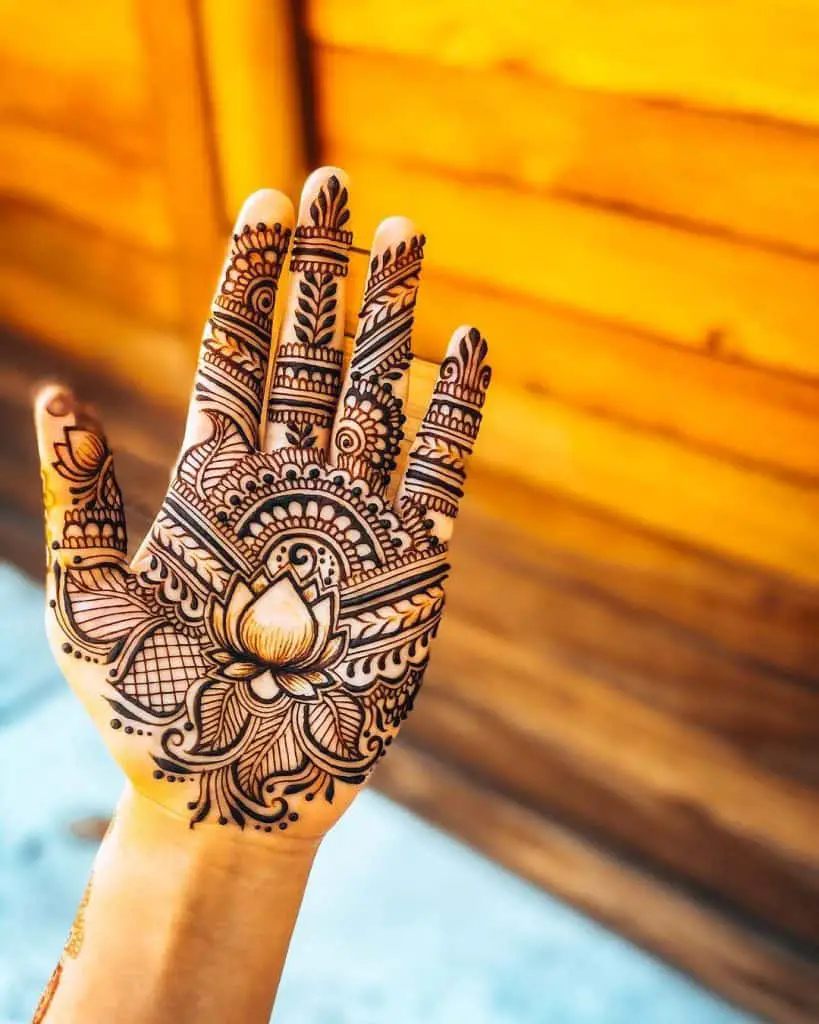
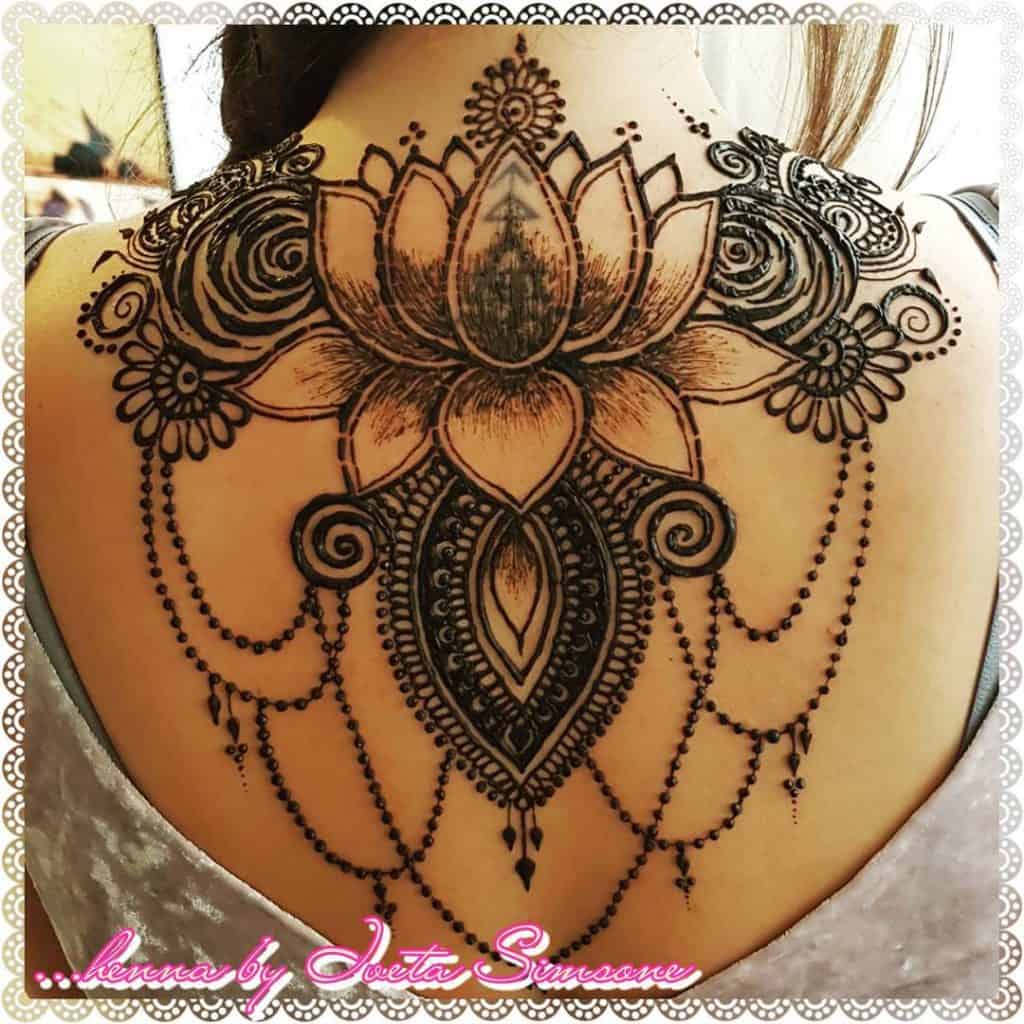
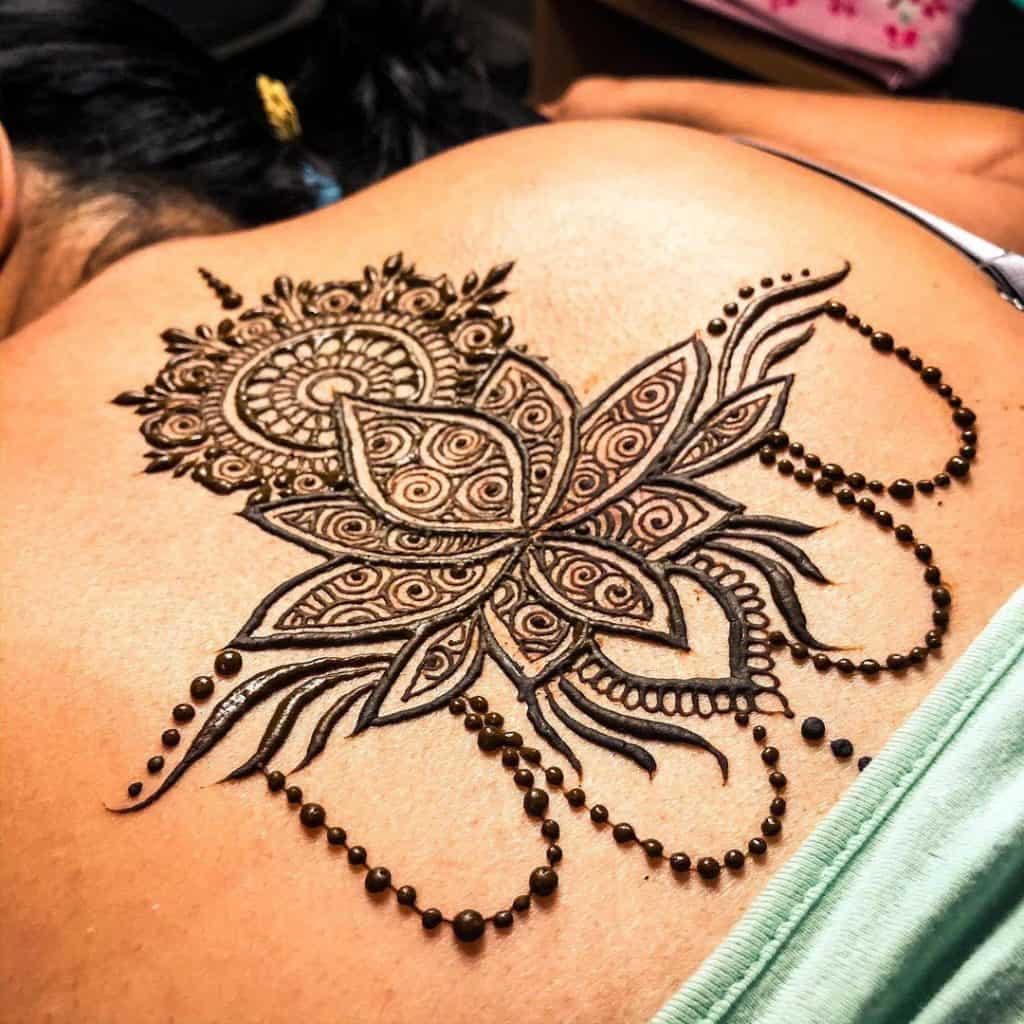
The Peacock Henna Tattoo Design
This is a design that is more traditional to the Indian culture. The design features an outline of the peacock, while the focus is on the feathers. This design is believed to bring happiness and prosperity.
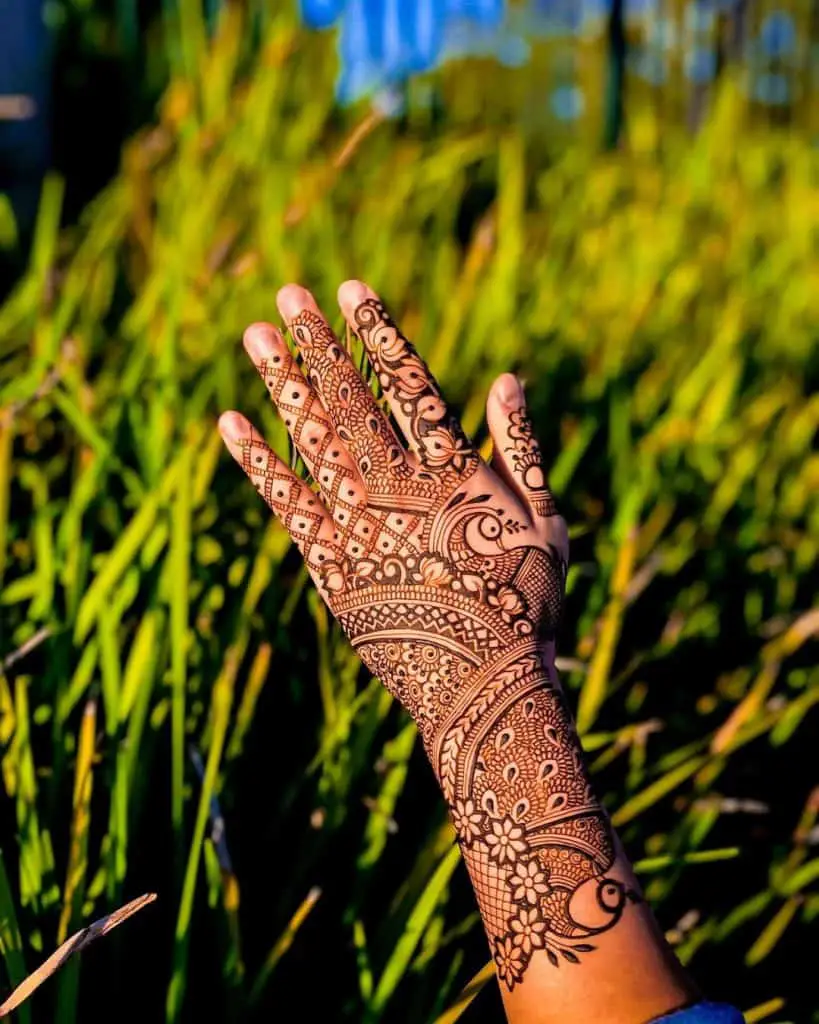
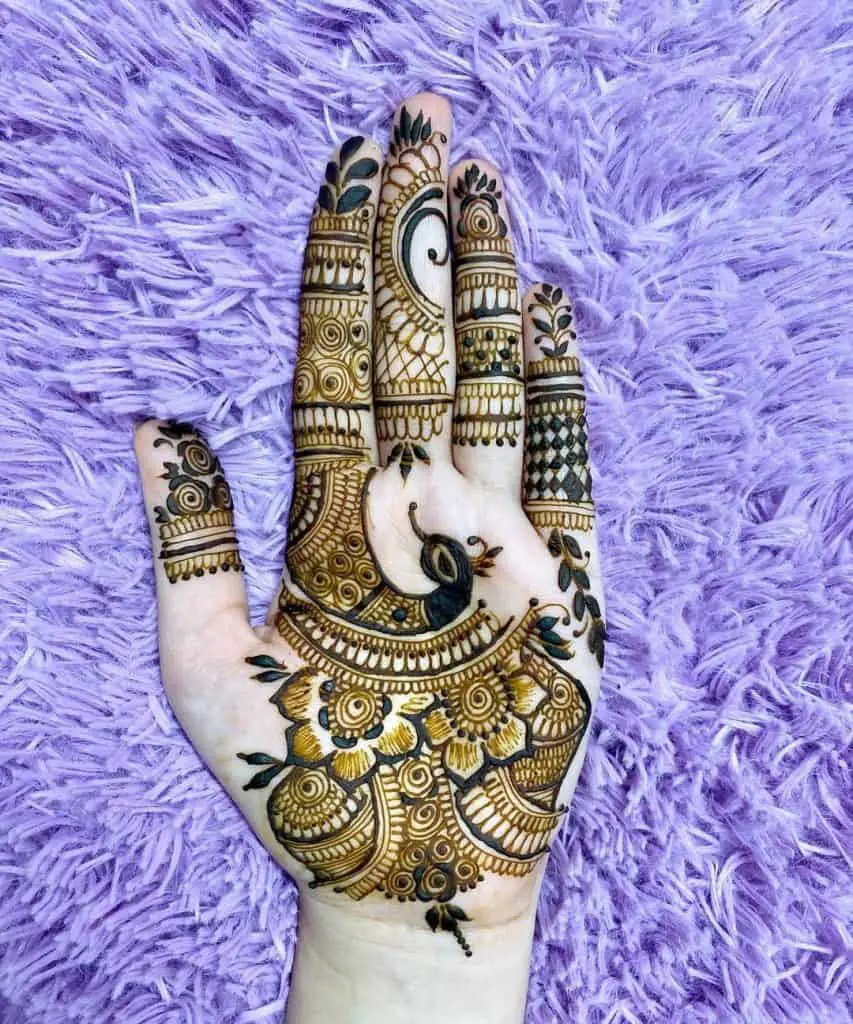
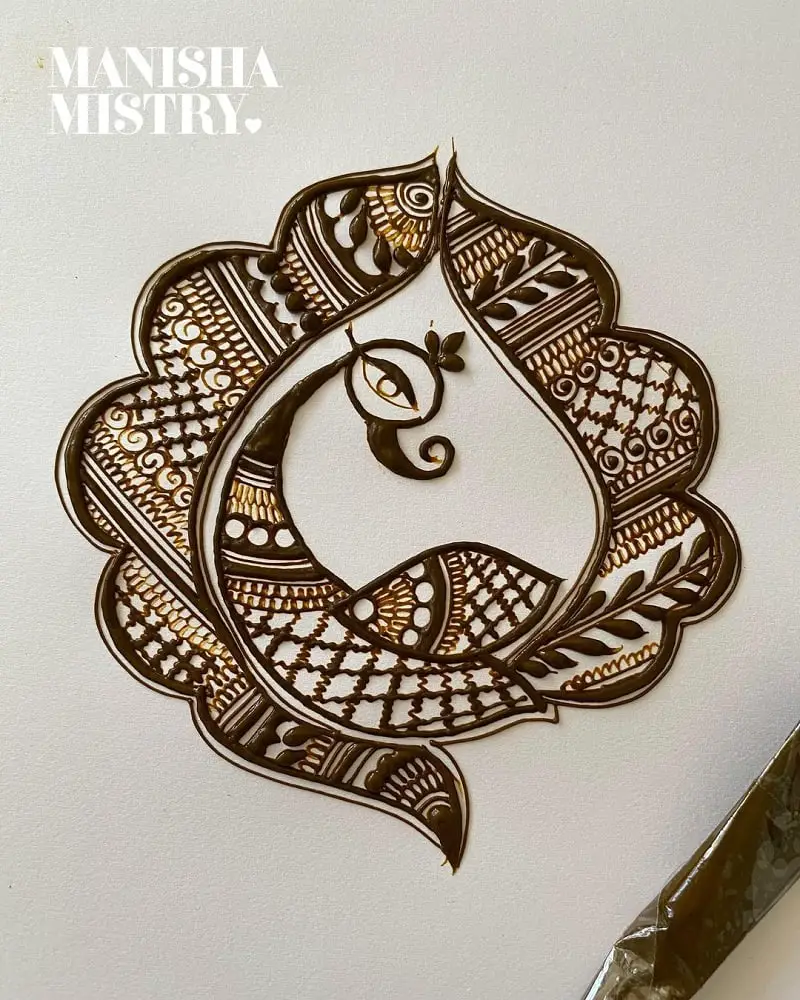
The Flower Henna Tattoo Design
The flower design is probably one of the most famous henna tattoo designs. It often features the design of a lotus flower, but the design can draw inspiration from any flower type. The design is often placed on the hands, but some people go for a bolder placement, like on the back, feet, chest, etc.
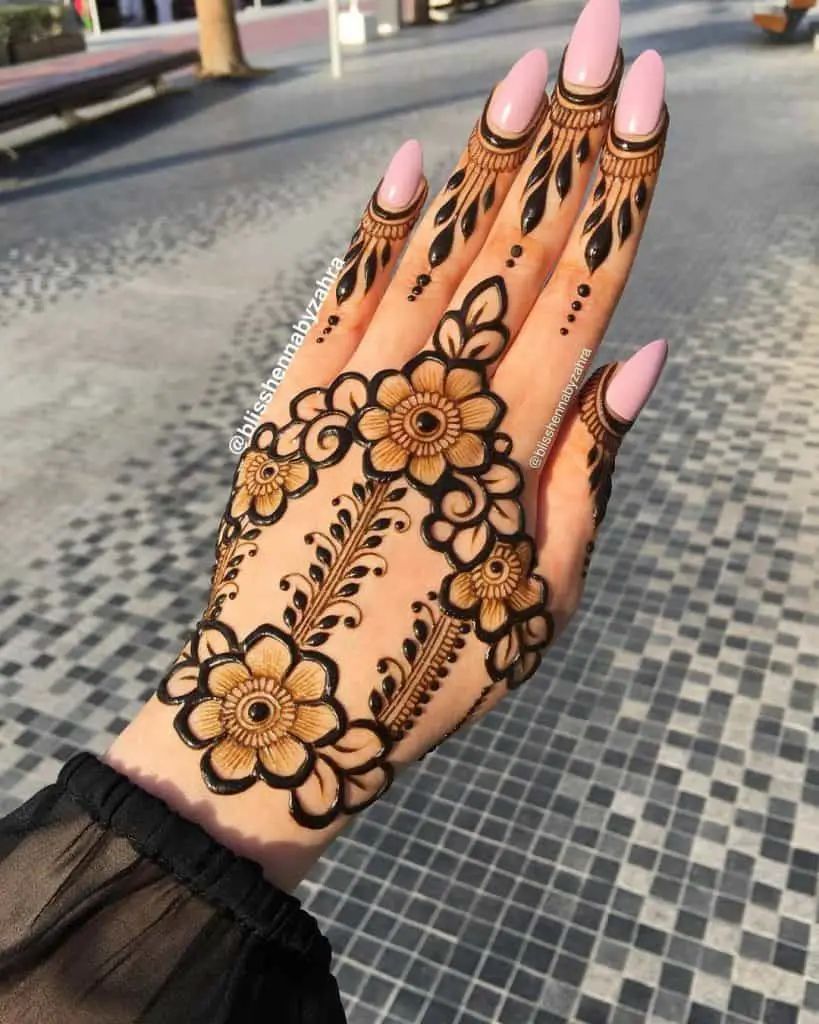
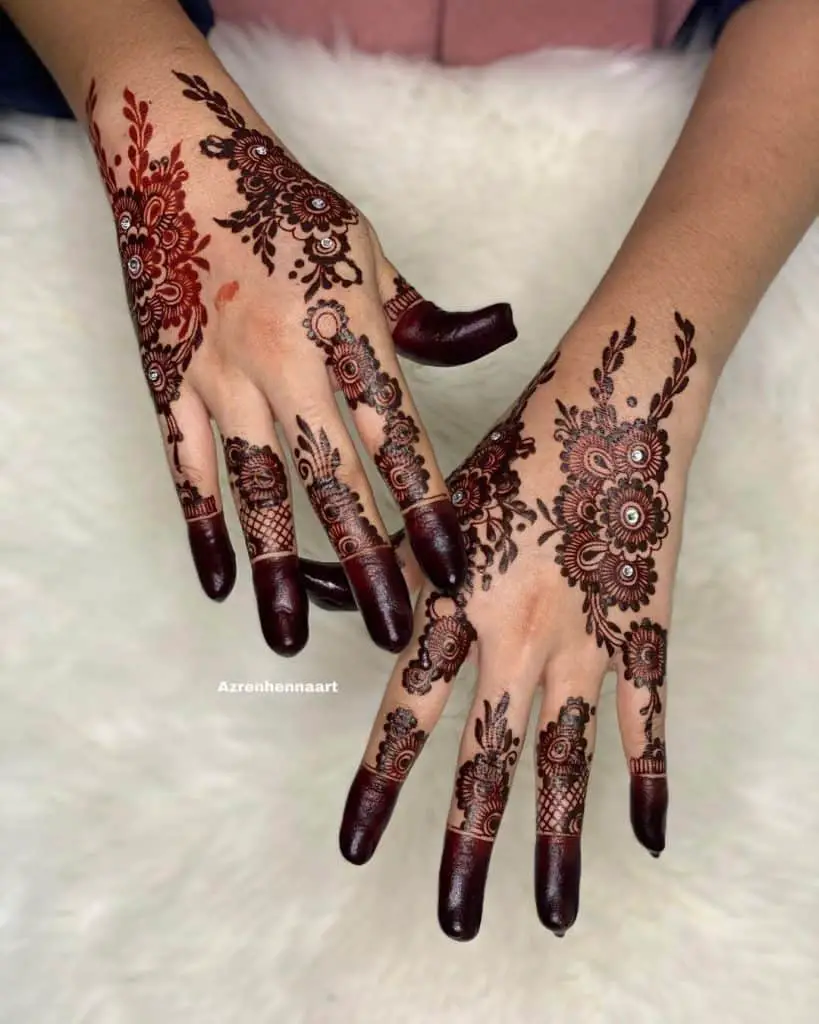
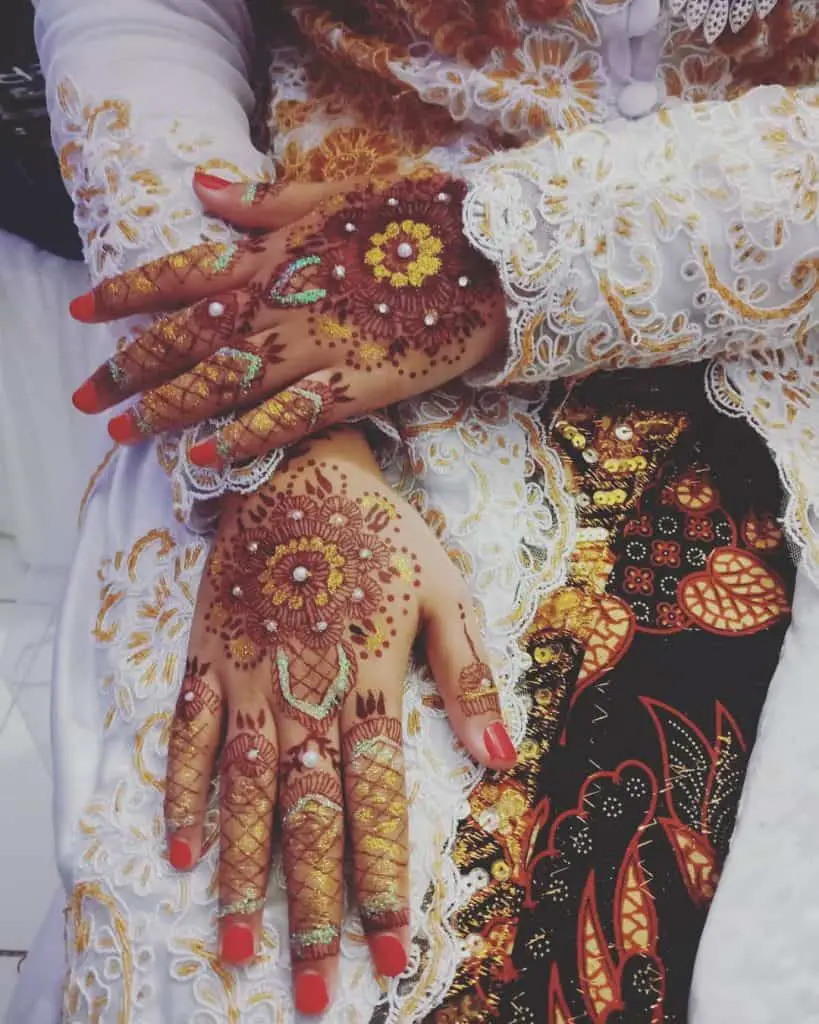
The Om Henna Tattoo Design
Another traditional henna tattoo design features the Om symbolism. This is a well-known symbol of spirituality in India. Om symbolizes the universe, the ultimate reality, and a mind’s journey in this world. Om is an incredibly important symbol in Hinduism as well. The Om design is often placed on hands.
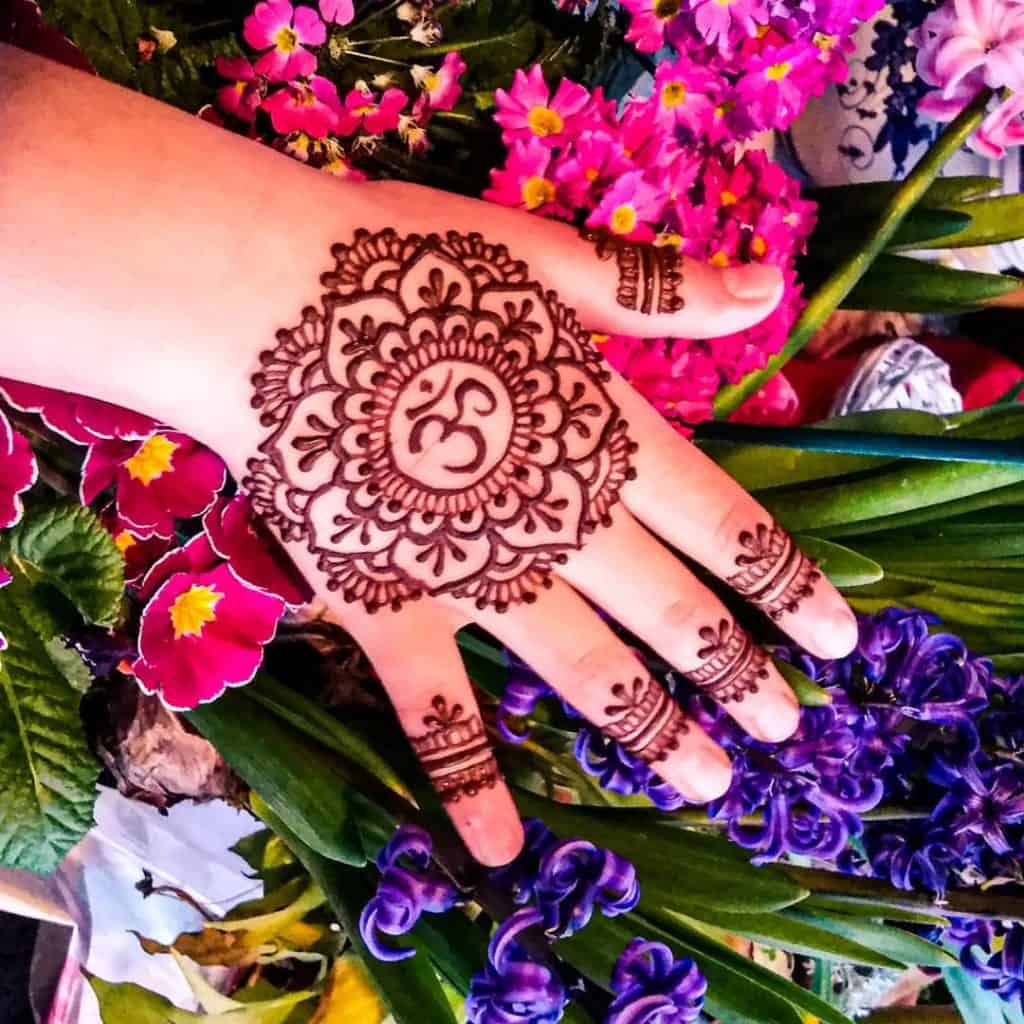
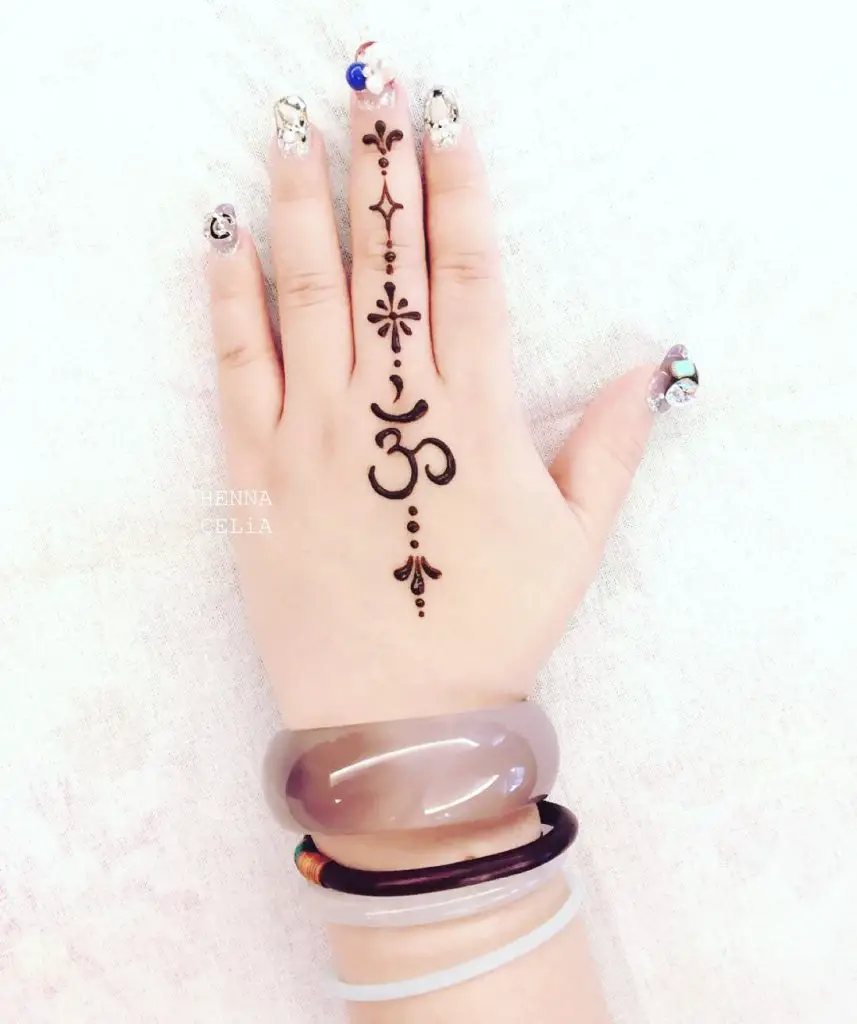
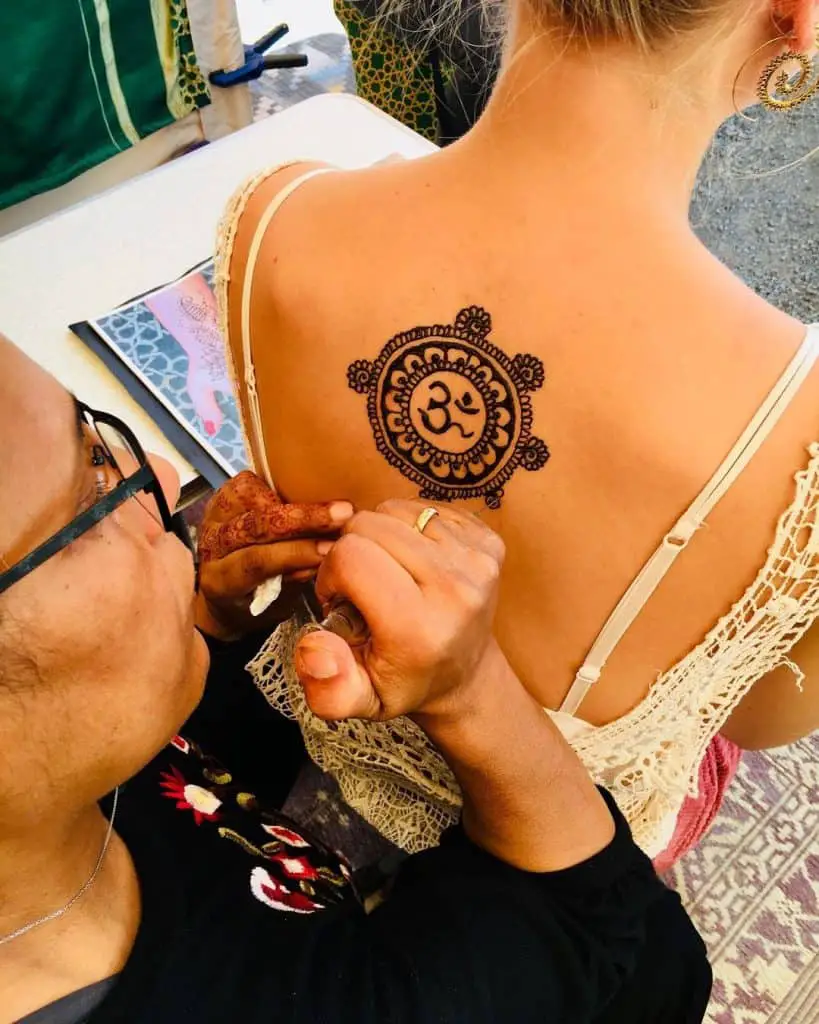
Final Thoughts
If you’re looking to do something fun and exciting, without a lifelong commitment, then henna tattoos are for you. Henna tattoos are gorgeous and can be an excellent accessory for special occasions, like a wedding or a celebration.
It is important to emphasize you get your henna tattoos done by a professional. These people are skilled and use only high-quality, natural, and organic henna. However, if you want to make your DIY henna tattoos at home, make sure to buy organic and natural henna powder Do NOT buy pre-mixed henna pastes; these often contain expired ingredients and chemical additives.
Also Read:
- Safe, non-toxic plant-based temporary tattoos made with 100% high-definition printing for a realistic look without the pain
- Easy to apply and remove - just stick for 20 seconds then take off
- Set includes 5 sheets with 17 fun, delicate designs like hearts, cats, smiles, suns, moons, and more
- Waterproof and long-lasting - stays on up to 2 weeks of wear
- Fashionable for women, men, girls and boys
- Place on arm, wrist, neck, leg, finger, waist, foot and more
- Great for parties, birthdays, and showing your unique style

